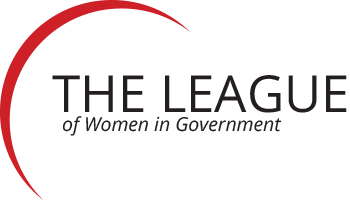By Rachel Keyser, Content Writer, ViewPoint Cloud
Do you know what kind of person, team, or organization you want to be in 2017? Here’s a better question: Do you know what kind of person, team, or organization you were in 2016? In a society this fast-paced, it’s hard to catch your breath. And harder still, to reflect.
But examining the past gives you building blocks for a better future. It challenges old routines and spurs innovation. It asks you to think deeply about what you do and why you do it. In the end, you come out with a more cohesive vision that runs throughout your work.
If you’re ready for more intentional, fulfilling year, let’s get started.
1. How do you fulfill your mission and values?
Always start with your foundation. Your mission and values are your foundation, and you will use them as the basis for judging the success of your work.
For an organization these might appear in a formal document. Though a conscious mission and set of values are no less important for an individual or team working within an organization.
But sometimes your purpose changes. It’s perfectly natural, and even healthy as long as you consciously reorient.
- Does my stated mission still encapsulate the reason for this work? Do my values still encompass what kind of person I want to be?
Once you lay this foundation, work up the pyramid. Think about where you focused your attention and resources this year, and how this aligns with your current or updated mission and values.
- How did this year’s major projects support my mission and align with my values?
What if you or your organization doesn’t have a stated mission and values? Schedule time to do this as soon as possible, but don’t rush it.
It’s important. If your work is not consciously guided, how do you know what you’re doing?
2. How do you set and measure your goals?
The classic question for any review process is: Did you meet your goals?
A necessary question, but not the only important one. Achieving a goal is only as important as its impact on your mission. In order to make sure you’re setting the right goals, ask yourself:
- How do I incorporate my mission and values into my goal-setting process?
Once you know your goals are aligned with your mission and values, the question becomes how do you measure them?
It’d be wonderful to always be able to check off little boxes — the number of hours worked or the amount of money raised.
But even you’re using appropriate metrics, quantitative data is still limited.
Let’s say your goal is to grow closer as team. How can you know what success looks like? Perhaps having a dialogue with people on the team who are already close, talking to other closely bonded teams, gaining insight from psychological studies.
Take time to think deeply about how you measure your goals, so when you look back a year from now you can be confident in your assessment of progress.
- What metrics did I use to keep track of progress? Are these the best indicators of success?
Now, you have the right goals and you’ve thought carefully about how you’re measuring them.
But life isn’t just a series of checkpoints. The most important question of all is what you learned while striving.
- What did I learn from working toward your goals this year that I can apply to future goals?
How did you overcome obstacles, collaborate in different ways, or find new resources? If something wasn’t working out how you expected, how did you decide whether it was time to let it go or try from a new angle? Did you uncover new capabilities you didn’t realize you had?
Thinking about the process of working towards your goals keeps you from a dangerous dichotomy: success or failure. Remember your long-term perspective. If each of your goals is a tree, can you still see the forest?
3. How do you spend your time?
Map out how you spend your time during an average workweek. Then, bucket these hours into categories. You might end up with something roughly like this:

Now, ask yourself these questions:
- Does the way I spend my time reflect my commitment to my mission, values, and goals?
- What unimportant things can I cut out? What important things are not getting enough time?
Maybe you can make some improvements, but overall you feel your time is well spent. Keep at it.
If you feel like your average work week needs a major overhaul, explore some of the reasons that may be contributing to wasted time.
- What is my method for prioritizing my time? What other systems might help me prioritize more effectively?
It may be that you don’t have a clear system for prioritizing your time, which is why it’s easy for you to get off track. Research different methods and experiment.
Maybe you’re chronically tired or hungry right when you’re supposed to be doing the most important thing of the day.
- Does my schedule account for my physical and mental needs?
If you’re feeling out of balance, start with the basics. Try scheduling your most important work for the the time of day when you naturally have the most energy.
Also, consider changing factors that might be draining you (lack sleep, healthy diet, inter-personal conflicts), and those that bring energy to your work (exercise, gratitude, hobbies).
Little else matters if you can’t come to your work feeling healthy and energized on a regular basis.
4. How do you collaborate?
As you reflect back on the year it’s easy to become overly self-absorbed.
What if you flipped the script? Instead of thinking about what you need, how would your work change if you asked:
- How can I better support the people, teams, and partners around me?
Still, working effectively with other people takes more than commitment — it’s also a skill. Whether it comes naturally or not, everyone has room for improvement, because working with new people and teams constantly presents new challenges.
Pay attention to the ways you communicate, how ideas are presented and explored, how you run meetings. Notice what things help produce collaborative environments.
- What communication channels and group activities do I use to collaborate? What elicits the best ideas?
While you improve your collaborative skills, be on the lookout for new partnerships. Many of your challenges could already be solved if you had the right minds working together. Be bold and reach out. If they say no, you’re no farther behind than when you started.
- Where are there more opportunities to work with people (inside and outside of your team) that would help support your goals?
You might feel uncomfortable working with new people or in new ways. Embrace the discomfort. It means you’re growing.
5. What tools do you use?
What are the tools you use on a daily or weekly basis? Tools meaning any mechanism that helps you do your work — software, office supplies, communication platforms, activities, etc.
Sometimes we’ve been doing things the same way for so long it’s hard to realize we’re doing it.

For one day, try to keep track of everything you use. It may be helpful to break them up into categories. Here’s part of an example list:
- Communication: Slack, Skype, Google Hangouts, Gmail, Mac Mailbox
- Writing: Google Docs, Hemingway App, notepad, WordPress
- Organization: Google calendar, iCal, post-its, Trello, Asana, Apple notes
- Collaboration: Beginning and end-of-week checkins, Slack channels organized by project
- Design: Canva, Unsplash, Photoshop
For each category, go through the list and do research on other available tools that might better suit your needs.
Don’t be afraid to ask people around the office, too. Maybe they’ve carefully crafted a genius system over many years, or maybe they too could benefit from brainstorming new ideas.
6. How do you show leadership?
There are a million different definitions of leadership. You’ll have to decide what rings true for you.
But, you can start with three sure signs: adaptivity, creativity, and intentional prioritization.
For starters, are you paying attention to what’s going on in your organization, field, and sector? Being a leader means you’re anticipating change and adapting to the future.
- How are you responding to trends in the changing environment around you?
It also means that you’re not thinking like everyone else is thinking. That you’re practicing the type of thinking that leads to original ideas.
Hard work does not equal original thought, and neither does intelligence.
Pay attention to the environments, collaborators, and states of mind that nurture creativity. When you take notice of something that works, practice it. Not forgetting to have fun while you’re at it.
- How do you practice creative, divergent thinking?
There’s a reason we started with mission and values. These are the foundation that direct all other efforts.
Being a leader means seeing the forest for the trees. Shifting your lens to make sure the micro follows the macro, the tasks and the methods support the vision.
- How often do you ask yourself these 3 questions:
How could this be done better?
What’s the most valuable thing I can do right now?
Are my goals aligned with my mission and values?
Committing to leadership is part of deciding what kind of person or organization you want to be.
Committing to a thoughtful reflection process is part of deciding how you’re going to get there.
Here’s to looking back and growing forward.
Rachel Keyser




